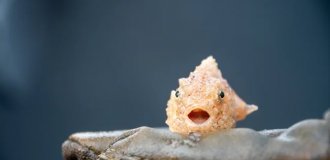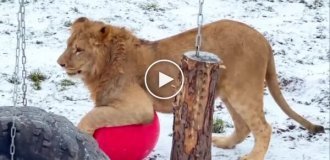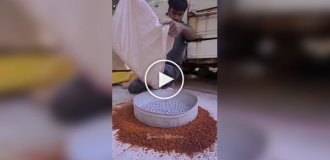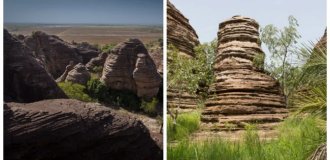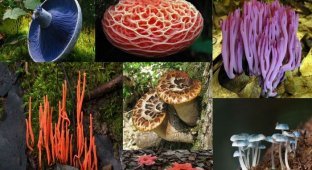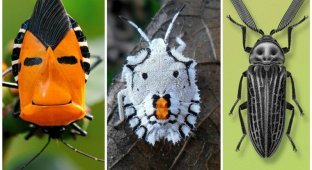Bronzovka. A cockchafer that is not a chafer at all (15 photos + 1 video)
It was a discovery for me that many people confuse May beetles (Khrushchev) with others that appear at the same time as them, namely with bronze beetles. Today we’ll talk about them.

Bronze beetles (Cetoniinae) are a subfamily of beetles belonging to the family Scarabaeidae. Includes five subspecies, which differ from each other in appearance and range. Within each subspecies, several forms are distinguished, differing in color and the presence or absence of hairs. These beetles are distributed throughout Eurasia, except for desert and mountainous regions; in the fauna of Russia there are 33 species of true bronze beetles.

Main types
Smooth bronze. Widely distributed in temperate regions. Most often found in gardens and forests with diseased old trees. It practically does not harm flowers, since its diet is based on the juice of overripe fruits and plants. The body is golden-green, in some cases with a blue or red tint, and the length of such a beetle is about 30 mm.

Smelly bronze. Prefers warm climates. Larvae develop in the ground, feeding on plant roots, while adult beetles feed on flower pollen. The insect has a shiny black color with white patches and a body length of approximately 12 mm. There are white hairs on the body that disappear with age.

Marble bronze. Inhabits forest and forest-steppe zones, preferring old gardens and forests with many diseased and rotten trees. It is the sap flowing from such trees that she feeds on. The length of the insect is 27 mm, the color is black-bronze with a green tint.

Green bronze. The main source of nutrition for it is the stamens, pistils and petals of flowers. The beetle got its name due to its green color, often with a golden tint. Body length reaches 20 mm.

The shaggy black bronzefish is black, its entire black body is covered with gray or yellow hairs. Sizes 8-13 mm

Congolese bronze. It is found in places with a tropical climate, living in bushes and trees. It feeds on fruits, leaves and flowers. It has a fairly short life cycle - about 2 months. Exotic lovers like it for its yellow-orange color; some people keep such beetles at home.

But let’s leave the exotic and talk about the most common beetle in our country, the golden bronze beetle.
Golden bronze
Bronze cats lead an active lifestyle during daylight hours, especially loving sunny, bright days. Overnight stays are also most often arranged on the ground. The bronzes spend the winter months there in the ground. In different parts of the range, the flight time of golden bronzes differs. Years can last 2.5-4.5 months.

These beetles eat flowers of cultivated and wild plants, as well as fruit trees. In addition, they feed on young leaves and drink sap that comes from trees, such as pears or oaks.

In places where sap flows out, common bronzes can collect in large numbers. But bronzes are not capable of causing serious damage to gardening.
Bronzeworts eat the flowers of such plants as: sorrel, knotweed, rowan, sloe, peas, maple, thistle, sage, and this is not a complete list of plants. Among cultivated plants, they prefer flowers of roses, rose hips, apple trees, pears, carrots, cabbage, beets, poppies, irises, mustard, rye and corn.
[media=https://www.youtube.com/watch?v=Ietgrhae3m4]
The female lays white-yellow eggs in rotting wood or manure heaps, compost and humus. They can also lay eggs in anthills. The total development time from egg to adult is 2-3 years. Larvae emerge from the eggs. By the end of their development, they reach a length of 40-50 millimeters. The larva has a thick, curved body that is white-yellow in color. During development, she molts 2 times.

The larva pupates in the substrate on which it previously fed. The pupa is free, it lies in a false cocoon on its back. Before pupation, the larva makes a cocoon from the soil, its excrement and wood dust, and it glues them together with the help of a secretion produced from the back of the body. The shape of the pupa resembles that of an adult beetle with shorter wings.

Interesting Facts
- The sex of an insect depends on the ambient temperature. If it is too cold or hot, only males or only females will hatch from the cocoons. The insect fully matures only after 2-3 years.
- Due to the fact that the bronze beetle is a non-migratory insect, and its larvae must feed on woody vegetation, it is found only in areas with bushes and trees.
- The habitat of the bronze vulture is very large, but there are places where it does not live. For example, it does not like desert areas, does not live in the northern part of the Crimean peninsula, in steppe spaces.
- The ancient Greek name for the golden bronze beetle is “Cetonia aurata” meaning “golden metallic beetle”.
- To take off, this beetle does not raise its elytra. To take off, it extends its folded wings through special side slits. This trick improves the aerodynamic characteristics of the insect, making its flight more maneuverable. As you can see for yourself, the picture below shows a characteristically colored golden bronze


- At the optimal temperature of maintenance, +28 degrees, the beetles live from four to six months and during this period they manage to lay eggs five times - the female is able to lay up to 40-50 eggs at a time. If the temperature is much lower, for example +18-20 degrees, they can live for a whole year, practically without giving birth to offspring.
- There are few natural enemies. Birds feed on beetles, magpies especially love them. The larvae are parasitized by the Scolia wasp and the tahina fly - symbiotic insects that benefit from another organism.
- Golden and some other bronzes also lay eggs in the cones of anthills, and their larvae live there, feeding on decaying needles and excretions of ants. This is where they pupate. For some reason, the ants do not touch either the larvae or the young beetles emerging from the pupae when they leisurely climb out. It is believed that they secrete substances that are attractive to ants, or, conversely, repel them. Many forest dwellers dig up the anthills of red forest ants precisely in order to feast on the larvae of bronze ants.
- Goliath beetles from the tropical forests of Central and Southeast Africa, the largest and heaviest beetles on our planet, also belong to the subfamily of bronze beetles. Their length can reach 11 centimeters and weight - 47 grams.
- In fact, this beetle is black, but the thin and complex microstructures of its integument, which refract and decompose light, create a play of rays, and the beetle appears metallic green, blue and even copper-reddish. This coloring, in contrast to ordinary pigmentation, is called structural, or optical.

So we met another harbinger of spring (although you can’t tell by today’s weather).



